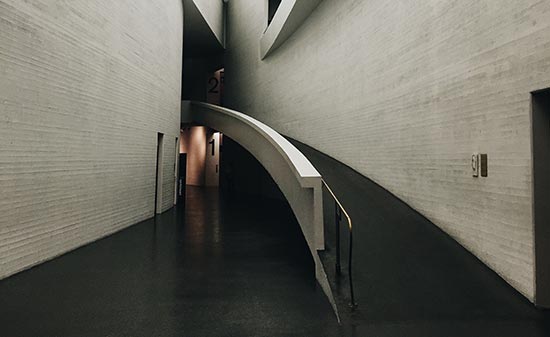
Barrier-free in architecture - Building regulations of NRW
08.03.2019 / Expert Articles
Since january the themes of „barrier-freedom“ and „inclusion“ are now included into the building regulations of NRW. In the regulations you can find now the social aims and wishes of the inclusion that are connected with it. With the Convention of the United Nations on the rights of persons with disabilities of 2008, aims of successful inclusions are defined as following:
- Participation at cultural, political and public life
- Job and activity
- Rehabilitation and health care
- Freedom of barrier, personal mobility and independent life style
- Respecting the privacy
Within the Convention of the United Nations on the rights of persons with disabilities, the countries obligate to take appropriate measures to reach the stated aims. Furthermore these aims arise according to the case-law of the Federal Constitutional Court, but also out of the principle of equality in art. 3 of the German Basic Law.
The principle, that no person shall be disfavoured because of disability, is an integral part of the DIN 1840 Barrier Free Construction – Planning Fundamentals.
Aim of DIN 18040 is to give every person the chance to use rooms in their general common way, without any specific complication and without the help of someone else, through barrier-free designing.
The norm DIN 18040 consists of three parts:
- Part 1 „Buildings accessible to the public“
- Part 2 „Apartments“
- Part 3 „Public transport area and free zone“
With the help of the definition of protection goals and setting new requirements to the freedom of barrier, the amendment of the building regulations of NRW consider the needs of people with low vision and speech-hearing disabilities, with impairment of motor functions or people who use mobility equipment or wheel chairs.
But also other groups of persons like:
- people of tall and small stature
- people with cognitive disabilities
- elderly people
- children
- people with baby strollers or luggage
lead several requirements for this norm to relief the usage. During the preparation of the new regulations wishes of persons concerned were highly valued.
This part of the DIN 18040 deals with barrier-free designing, execution and furnishings of apartments, buildings with apartments and their outdoor facilities that are for access and home-related usage.

The requirement to the infrastructure of buildings with apartments generally observe the unrestricted use of the wheel chair. Within the apartments, it is distinguished between „barrier-free use of apartments“ and „barrier-free and unrestricted use of apartments“. [Source: Beuth-Verlag]
According to the order for modernising the Building Regulations of 12.07.2018 by the Parliament of the state North Rhine-Westphalia, the Building Regulations NRW 2018 entered into force by 01.01.2019.
Several topics here are about basic revisions of the Building Code, which orientate mainly on the Model Building Code of the federal government.
Furthermore, the revision is to help introducing the DIN 1804 partly as a technical construction regulation of the Building Regulation NRW and therefore to become an integral part for the planning of buildings and outdoor facilities.
Hereby the regulation for barrier-free construction in the north rhine-westphalian Building Regulations will be renewed and adjust to the changing needs and everyday reality of people. According to the draft law, that means that apartments of multi-family houses now have to be barrier-free and easy to access for wheel chair users. Buildings accessible to the public have to be barrier-free in required extent.
This in particular is being shown in paragraph 49 of the new Building Regulations. According to the draft law, the basic requirements of freedom of barrier within residential buildings and buildings accessible to the public are here renewed and clarified.
According to section 1, buildings categorized as building classes 3 to 5, have to be accessible easily with wheel chairs and have to be barrier-free. Furthermore according to section 2, building works have to be barrier-free in required extent, in case they are not being visited by people who are not predictable beforehand.
Residential buildings are not affected by this regulation.
It remains to be seen how building supervisory authority will be dealing with these topics in the course of administrative provision
This question will remain exciting for us planners but also for clients and building contractors.
Through the introduction of the DIN 18040 as the feature of the amendment of Building Regulations NRW, a clarification of the requirements is expected altogether.
It would be preferable if there was a possibility of a safe and proper intercourse with the topic of freedom of barrier and inclusion as a part of daily life and if it was planned certainly.
It is a good and right start not to leave out people – no matter how they live their life.
In doing that, a balance has to be found between economy and humanity, equality, individuality and social togetherness.
The principal of Basic Law should be seen in the building industry in the near future.
Photo credits:
Photo by Yomex Owo on Unsplash
Photo by Steven Spassov on Unsplash

About the author
Angela Veccari-Kruse
Dipl- Ing. Architektin (Architect)
Angela, born in 1977, is an Architect and responsible for Planning and Project Management at Figo GmbH. She has mastered her studies in Germany and Italy and worked for famous brands like Ferarri, Puma, Burberry and Harley Davidson.

